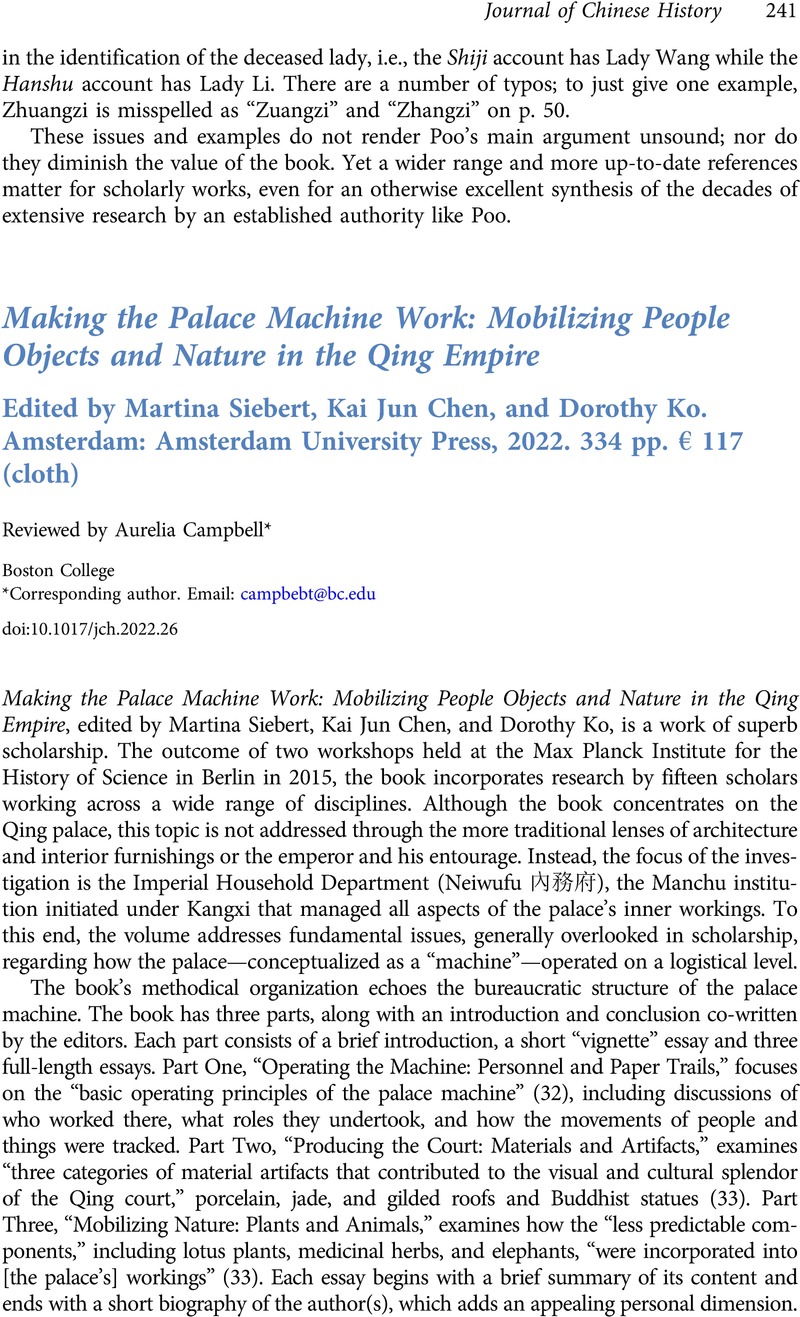No CrossRef data available.
Published online by Cambridge University Press: 25 November 2022

1 See, for instance, Berliner, Nancy, ed. The Emperor's Private Paradise: Treasures from the Forbidden City (Salem, MA: Peabody Essex Museum, 2010)Google Scholar, and Berliner, Nancy, ed. Juanqinzhai in the Qianlong Garden (London: Scala Publishers, 2009)Google Scholar.